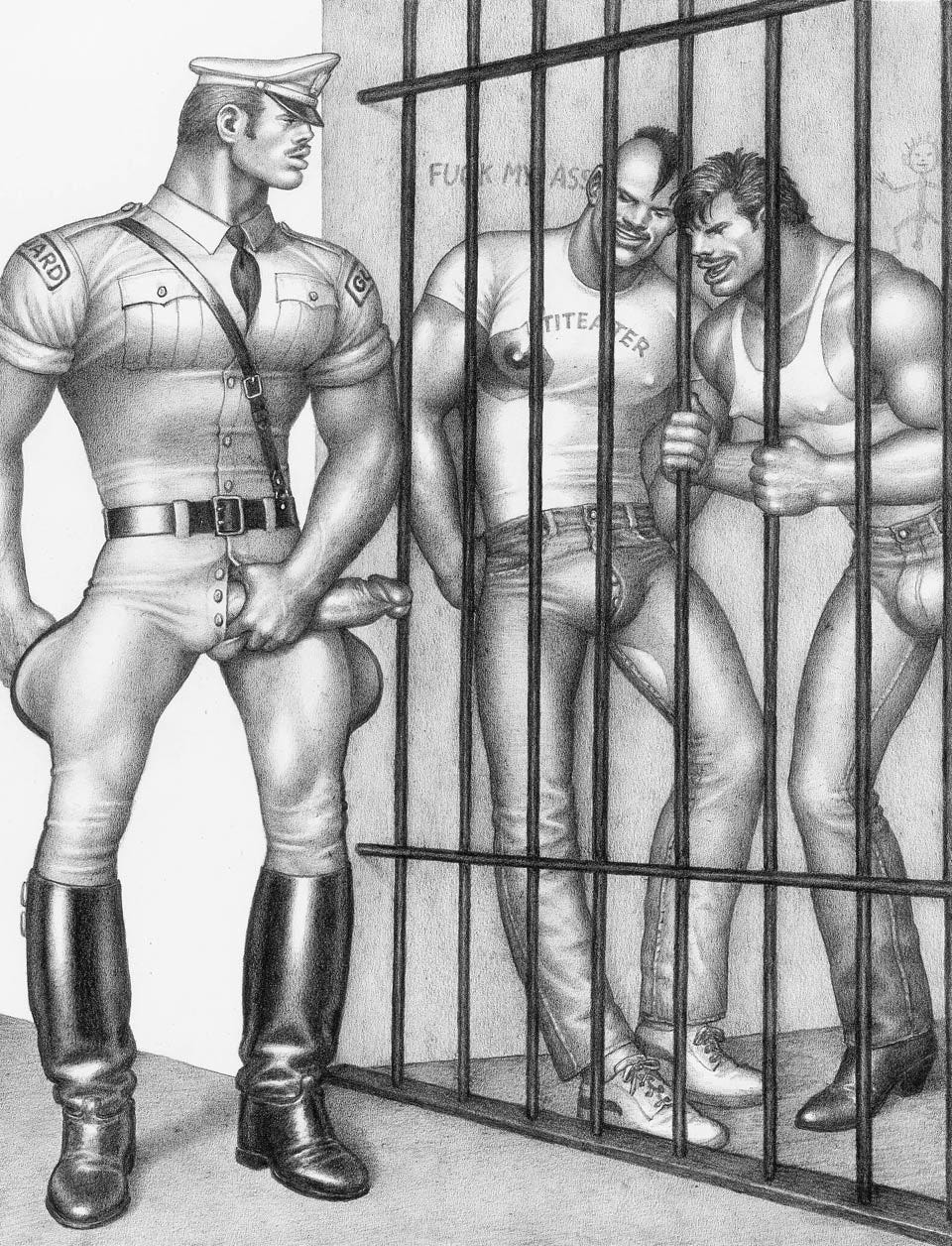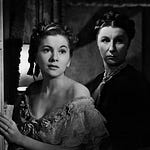The protagonists of david stein’s Boots, Bondage, and Beatings (BBB) are horny for power, but not their own. These bottoms—(implicitly white) men who mostly identify themselves as slaves—want nothing more than to be controlled, trained, and used. Everything they do is for their Masters’ happiness, meaning that their polymorphously perverse pleasures can be found almost anywhere: in the endurance of physical pain and manipulation; in full body bondage; in capture and incarceration, completely isolated from the world outside their cage; in months of chastity with no release; in pure subsistence on piss, semen, and dog chow (and for this, they are grateful. “Few American Masters will require you to eat their shit, though it’s common in Europe,” one of stein’s Masters informs a new devotee). These slaves are, or are seeking to become, smooth-brained holes with perfect bodies in service to real alpha males who make enough money that they can keep their toys chained up in climate-controlled cells under their houses, always available to pump and dump. No gods, only Masters.
As I wrote in the first installment of this series, reading erotica for which you aren’t particularly primed can be an interesting affective experience. Not only is it harder to get into the flow state of arousal, wherein one’s beliefs, qualms, and scruples are suspended; it’s also easier to become bored by the patterns lurking under the pageantry of an overactive, one-handed imagination. Our personal sexual obsessions are endlessly interesting to us, but stein’s will get old pretty fast if you don’t share them. Though I found a lot of BBB entertaining, I did catch myself wondering just how many times I could read about a horsecocked Master in jodhpurs instructing a rock-hard slave on the finer points of high protocol without glazing over. When the erotica is about fetishes that aren’t yours, the stakes are low; it’s not like you’re going to have an orgasm, right?
This detachment frees you and your jaundiced eye to scrutinize the erotica’s problematics all the more incisively. From this distance of non-arousal, you can think more deeply about what the fantasy in question has to say about its writer and the world in which he lived. What do stein’s fantasies of hot cops, militaristic topmen, and snow-white sexual imaginaries say about his life, his scene, and his values? What do they convey about the ability of stein, as a writer, leatherman, and activist, to subvert powers against which he worked? And what do they convey about his potential reinforcement of said powers?
The desires showcased in BBB more or less contrast with my own, a surprisingly fertile juxtaposition in that it both reveals and implicates. Outside the horny cocoon of my preferred erotic fantasies, in reading BBB I was more apt to notice flashes of new or unsuspected desire or arousal, like lightning in the distance. In the fuck hinterland of not-your-erotica, where you’re not only not seeing that to which you’re accustomed to fantasizing about but that which should be anathema to your hard-on, you’re liable to surprise yourself. BBB reminded me that many things can cause us to become aroused against our will, things that we find ugly, embarrassing, taboo, or uncomfortable. An example of this that I will talk anyone’s ear off about, given half a chance, is a bestiality scene in Jane Delynn’s 2001 novel Leash, which remains one of the most erotic reading experiences of my life. A few passages about a dyke fucking a dog produced a raw, horrifying, formulative experience in me that has gone on to inform my own work, not to mention my conception of my self. I did not expect to be turned on, but I was, and I was ashamed of myself. On a certain level, I still am. For all my issues with Delynn’s work—another thing I could talk your ear off about—I am still impressed at her power to confront me with myself.
Now, all of this isn’t to say that there weren’t scenes, or instances, in BBB that I found hot. Indeed, these flashes of desire re-illuminate the role that my preferred psychodynamic arena—the male-led white American family unit—has with US military hegemony. By now long accustomed to bad-faith, often carceralist arguments “against” taboo desires like, say, incest fantasies among consenting adults, it’s become rather easy to extract my preferred cumshots from stein’s. After all, there are no slaveowners in my fantasies! That means I don’t have to interrogate my relationship to anti-blackness, right? It’s all in the family!
Superficially immune to the spell that the M/s dynamic casts over stein himself, I observe with discomfort and curiosity the moments of BBB when I am breached and taken over, however briefly, by something that contradicts my sense of self as an anti-racist or anti-imperialist or anti-white-supremacist white person. I am forced to connect stein’s desires back to my own. I am forced to implicate myself, and to admit my implication.
BBB has almost zero discussion of race, anti-blackness, the history of chattel slavery, or anything offering contextualization of the M/s dynamic upon which it’s built. It doesn’t even have any characters coded or outright named as non-white. Though BBB is suffused with images and metaphors of mastery and servitude, of the American military and of America’s police state, of human property and naked power, one would never know that all of these shibboleths and structures came from somewhere. In stein’s stories, the slave auctions run by white, cis, muscled, middle-to-upper class gay guys are solely a solution for yuppies in search of connection, purpose, meaning, of a “real life,” as more than one slave puts it. There is no hint of the world-ending horror of the source material—or even that black leathermen might exist alongside and contemporaneous with the players of stein’s stories.
In stein’s fantasia, slavery is a vocation, a calling for certain white gay men. “I felt more real, more me, when I was naked and chained, with my tongue on a man’s boot and my ass burning from his belt, than I ever felt in the office where I worked or the studio apartment where I ate and slept. Which was the act and which was real?” In a 1997 essay called “What a Slave Needs,” stein wrote:
“The popular conception is that slaves are people who are forced to obey a Master's orders, and many slaves also fantasize being forced. Being obedient is held to be the opposite of freedom, and the negative connotations of ‘slavery’ largely consist in this lack of freedom.
This no doubt was true of many or most coerced slaves in history. It is not true of consensual slaves today. Those who become slaves today in the U.S., Europe, and the rest of the developed world do so not because they are being forced to obey, but because they positively *need* to obey. Obedience is the voluntary slave's lifeblood. To obey is not our cross but our joy! We only ask to be given the opportunity.”
We can comment on the obvious ~privilege of someone able to engage in a fantasy of powerlessness conceived of in this particular way while disengaging almost totally from the history of enslaved people in America and beyond. Still, you might ask, is it fair to require so much out of a book of erotica? It’s jerkoff material, after all. Is it right to litigate the unbidden desires of a leatherman who surely meant no harm to anyone else?
I’ll answer that question with a question: What would deciding whether stein’s desires were good or bad, problematic or not, accomplish? david stein’s white slave fantasy is bad. <dusts off hands and goes back to beating it to my own questionable fantasies>. I think if white people are going to confront white supremacy in our leather scenes, we must move beyond, “Is this desire good or bad?” to more actionable concerns, like “Does this activity/party theme/way of moving through community alienate players of color? How am I helping to build communities, coalitions, and movements alongside players of color that are not passive to white supremacy, but utterly inhospitable to it?” Inserting trigger warnings or token black characters into stein’s implicitly white fantasias would not only not resolve the issues of racism in today’s leather scenes, but it would be inauthentic; the worlds that he created in his stories weren’t taken from thin air, but probably reflected his leather scenes and the men in it. What is the point of elucidating stein’s problematics, or making neoliberalist corrections to them, when it would be more useful to ask all white players, myself included, to do more—and not for inclusivity fetishism’s sake?
Of course, I can’t comment on any of this without also implicating myself. Sure, there are nuances. One of BBB’s stories is set during SF Pride 1997, when a white slave pursuing a white Master, who is also an off-duty cop, remarks approvingly that, “You’re comfortable with who you are, sir, both gay and kinky. That should help you be a fine cop—and a good top.” In my milieu, gay leatherfolk who are also pigs is a contradiction in terms, and yet we all know there are cops, soldiers, and their ideological fellow travelers in all kinds of leather scenes, if not the ones in which we’re immediately active.
Nevertheless, in seeking to contextualize that which stein has decontextualized, I can’t fail to cast that same jaundiced eye over my own glass house. A few years ago, Bambi and I watched Kenneth Anger’s Lucifer Rising together at their apartment in Oakland. It was another unexpectedly profound experience for me, to sit with my friend enjoying cute boys and their innocent markers of blue-collar culture that gradually become markers of gay and leather and biker culture that gradually become markers of Nazi and police cultures.
I couldn’t get it out of my head. What was the difference between what I did with my friends and what the white Old Guard was doing, and where did one draw the line? Lucifer Rising was released in 1972, three years before Corregidora, Gayl Jones’ novel about the generational trauma of a black American family in the aftermath of slavery. In some ways as dreamlike as Anger’s short film, Corregidora layers memory with family myth, the passing down of the soul-murder of anti-blackness from grandmother to mother to daughter. These works, and their creators, were roughly contemporaneous, and dealt with overlapping themes, and yet you would never know it.
Watching Lucifer Rising wasn’t the first time I had considered racism in the scene, but it was the first time that I began to think about how the scenes in which I made my home could be salvaged, or remade. More on that next time.
David tweets at @k8bushofficial.












